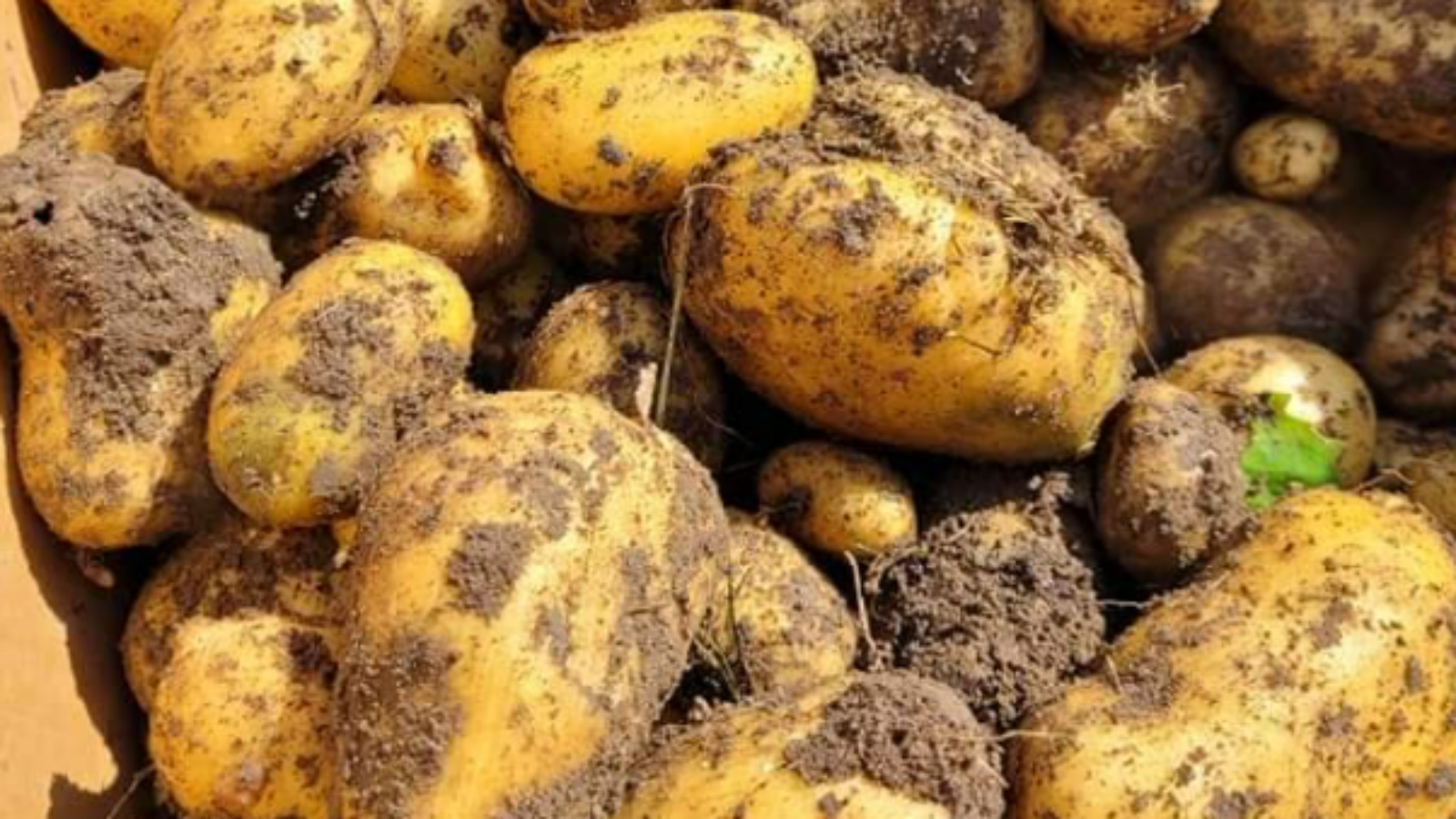A bit wet and grey with you? Enjoy the lush, abundant growth that wet weather gives us but do also be vigilant; warm, damp conditions can lead to blight on potatoes and tomatoes, where leaves develop spots, plant stems collapse and tatties and tomatoes turn to mush. Regular inspection is everything, and so is local knowledge, so familiarise yourself with blight symptoms and check in with any neighbours growing and ask if blight is in the area.
Do remember that growing conditions and flowering and fruiting varies across Scotland. If you’ve missed something, you can scroll through weekly updates or Grow 6 crop pages to catch up.
Peas
Still enjoying some pods? When peas no longer have flowers or pods forming, the tops can be cut to soil level, leaving roots in the soil. The tops are perfect compost material for either starting a heap off at the bottom, or cutting them up and mixing through with other garden waste.
Tomatoes
Keep up the weekly feed and, where you can, move plants in pots to ensure they get as much sun for ripening as possible. Removing lower leaves can also help improve air circulation and access to sunlight.
Berries
Currant and raspberry plants will love the rain. For summer-fruiting raspberries that have finished fruiting, remove the fruiting canes at ground level (see last week’s post). Autumn fruiting raspberries may need some support as they grow before flowering. If you have just one plant, a sturdy cane and string system will stop the fresh new canes from falling over with the weight of rain and developing fruit. For a newly planted row look into a post and wire system. Strawberry ‘runners’, young plants growing from the ‘mother plant’, can be cut off and potted on or planted into empty space for next year.
Greens
Young leaves might be prone to slug damage, so keep an eye out. Keep up regular sowings of mixed leaves, baby spinach, and young kale leaves for picking.
Herbs
Warm damp days are perfect for basil transplants if you haven’t tried it and have windowsill space. Take a supermarket pot plant, and split it into at least 4 separate plants and repot them to keep you in fresh basil well into the autumn months.
Tatties
If your tatties have flowered and the lower leaves are yellowing you can just cut the tops (haulms) off at soil level. If you have suspected blight, where the stems rot and turn brown and lesions develop on the leaves, cut and remove all leaves and leave the tatties untouched in the soil for a couple of weeks to protect them from blight spores. Only then should you lift them and store them. N.B Plants with blight should not be composted at home, but they can be added to local authority green waste recycling (if you have one) or, as a one-off, your household waste.
Follow Get Growing Scotland on Facebook and Instagram and please use #grow6 #getgrowingscotland in your posts so we can share your growing photos, stories and inspiration.
And finally – At this time of year, our growing spaces can produce barrowloads of green waste, all perfect ingredients, when mixed with flower stems, egg boxes and toilet rolls for compost for next year. So, if you have a garden space and don’t have a compost heap, build one, your soil needs your waste to enrich it for the next growing season. If you are windowsill or balcony growing could your nearest community growing space or neighbour with a garden benefit from your garden ‘waste’. Find inspiration and information here.


